Geology Facts
Geology [jē-'ä-lə-jē]
The scientific study of the origin, history, and structure of the earth.
Rocks, rocks, and more rocks
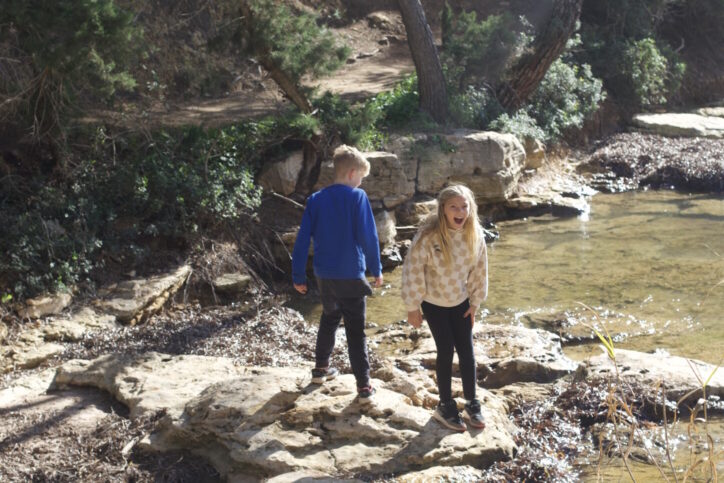
Rocks are all around us. You can see rocks inside your house, in your yard, on your street, on a country road, everywhere you look. Statues, chalk, marble, pencil lead, sandpaper, glass, tombstones, bricks, the walls of your room, mountains, pebbles, soil, and volcanoes are all rocks!! Rocks are used to build homes, an aluminum baseball bat, a washing machine, video games, airplanes, cars, and jewelry! Rocks aren't always solid. Sand and mud are rocks. No matter where you are, you are always close to rocks and minerals. They are fascinating and exciting, so let's begin our investigation to learn more.
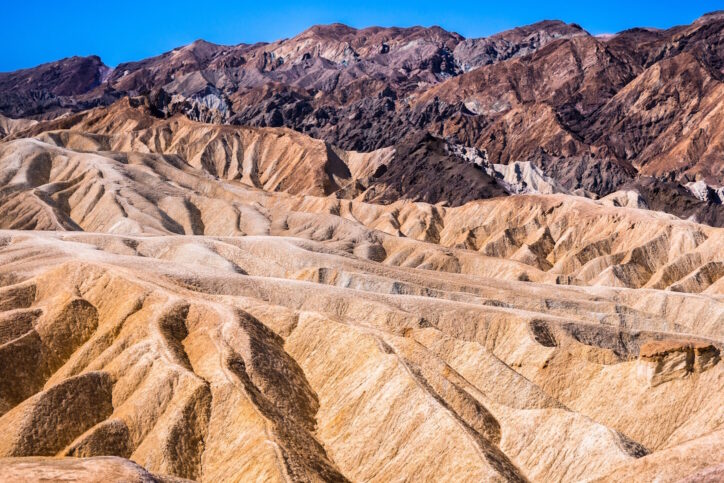
Let's start at the beginning …
We'll begin with a look at the structure of the earth because that is where all rocks come from. They have been on Earth for almost 4 billion years. Geologists record time with the Geologic Time Table.

Where do rocks come from?
The Earth has 3 layers: the crust, the mantle, and the core (which is subdivided into the outer and inner core.) Each layer is unique. You can find interesting details about the layers of the earth at Science Trek: The Earth.
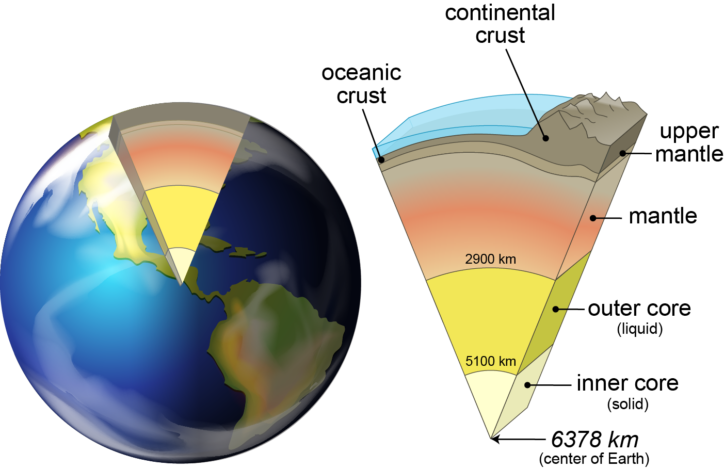
How do we classify rocks?
There are 3 main types of rocks depending upon how they were formed in the different layers of the Earth. They are: Igneous, Sedimentary, and Metamorphic.
Rock Classifications
| Type of Rock | How is it formed? | Where is it formed? | Other Facts & Examples |
|---|---|---|---|
 | Sedimentary rock is weathered into many pieces of rock and soil which then settles into layers. The layers are squeezed together until they harden into rock. | Found in locations where oceans, lakes, or other bodies of water exist or once existed. | Is layered, soft, often contains fossils. Examples: limestone, chalk, coal, sandstone, shale |
 | Igneous rock is formed when melted rock cools and hardens. | Created by lava from volcanoes or magma that cools inside the Earth. | Can be shiny or glossy Examples: basalt, granite, pumice, quartz, obsidian |
 | Metamorphic rock forms when igneous, sedimentary, or other metamorphic rock is changed by heat and pressure. | This type of rock is buried deep within the Earth where it is created from the heat and pressure found there. | Is hard, often contains crystals, may have bands or layers. Examples: marble, slate, gneiss, schist |
Geological Poetry
Rock On!
By Cherry Carl
Rocks! Rocks! They're not the same!
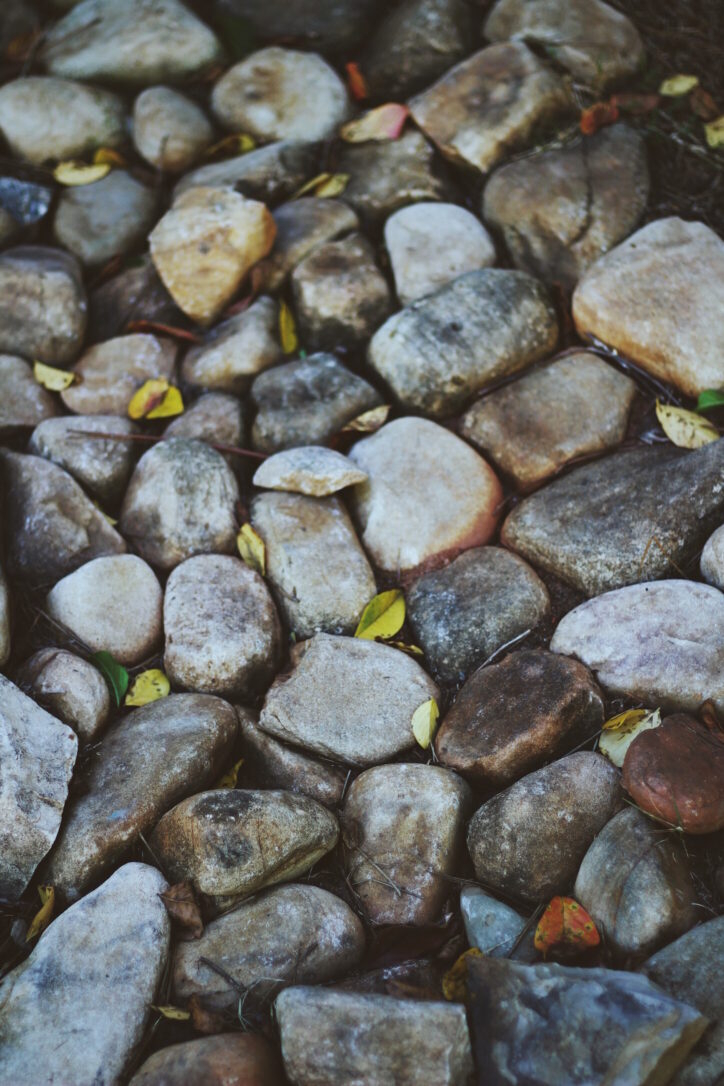
Each one has its claim to fame.
Rocks are grouped in three main types:
Some have layers … some have stripes.
What makes them different, do you know?
Let's take a look at rocks on show.
This rock star is “igneous.”
It's made when earth seems furious.
Liquid rock erupts and cools,
Forming solid glasslike pools.
“Metamorphic” means some changes.
Mother Nature rearranges.
Using heat and pressure, too,
She makes old rocks appear as new.
“Sedimentary” means small pieces
That nature generally releases.
Using wind and water, too,
It makes new rocks for me and you.
Rocks! Rocks! You're not the same!
It's easy now to know your name.
This poem was written especially for Science Trek — courtesy of Cherry Carl. For additional poems on science, history, language, and holidays visit her website at: Carl's Corner
Changes
A rock can begin as one type and can change many times. In fact, rocks are always changing. However, the changes happen so slowly that they are difficult to see. We have seen above that heat and pressure can change rocks which then break down by weathering and move by erosion. It can take thousands of years for rocks to weather and erode. This process of changing is called the rock cycle.
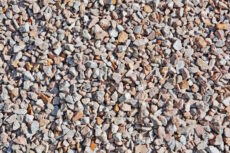
Weathering is the process that breaks rocks down into smaller pieces. Weathering can be caused by: wind, rain, ice, running water, plant roots, chemicals, freezing, and thawing.
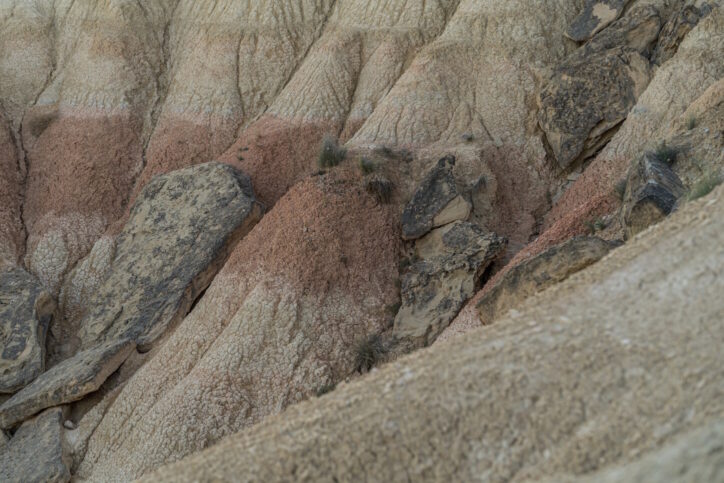
Erosion is the movement of rock pieces from place to place. Erosion can be caused by: wind, rain, running water, waves, gravity, and moving ice.
Fascinating Facts

The heads at Mt. Rushmore are carved out of an igneous rock called granite.
The heat of lightning striking the beach sand can melt the sand to form a glassy rock called “fulgurite.”
Don't miss the amazing crystals at the Smithsonian Gem & Mineral Collection.
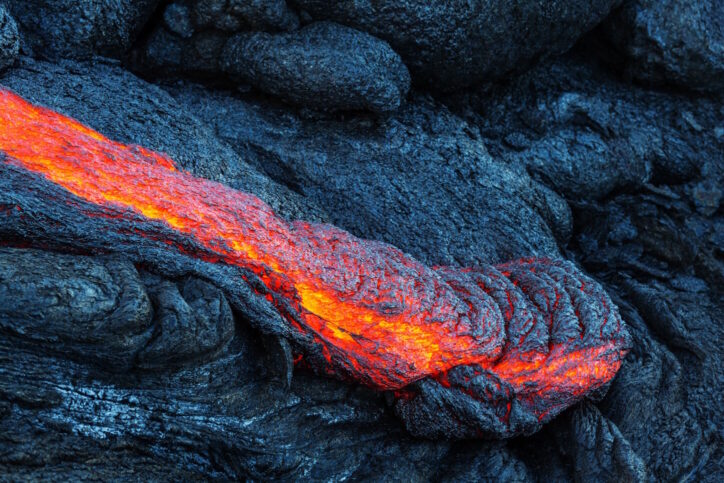
Melted rock is called magma when it is inside the earth, but called lava when it runs out onto the surface of the earth.
The mineral, salt, was so valuable in ancient times that it was traded ounce for ounce for gold.
A diamond is the hardest mineral.
Meteorites are rocks from space, and they can help scientists learn about the solar system.
What else do we know about rocks?

A rock is a material made of one or more minerals. Minerals are made from 92 elements that join together in many different ways. Some minerals are made of only one element, such as silver. Most are a combination of two or more elements, such as granite which is made of quartz, feldspar, and mica.
Scientists have identified over 3,000 minerals. The particles of minerals are arranged in a repeating pattern called a crystal.
Recognizing a mineral is not an easy job. There are several different properties of minerals and tests that are used to identify them. The properties are: luster, hardness, color, streak, cleavage, crystal shape, and magnetism.
Stalactites and Stalagmites
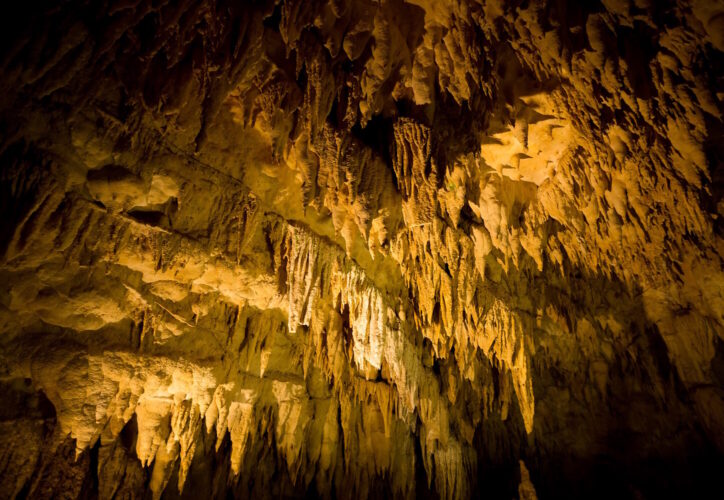
Stalactites form when mineral deposits and water seep from the walls, ceilings, or rocks inside caves. These deposits drip slowly and create an icicle-type formation. To remember the difference between these two formations, think: stalactites "stick tight."
Stalagmites are the collection of mineral deposits that build up on the floor of a cave. The dripping minerals stack on top of previous deposits to form a type of tower. Sometimes they connect with stalactites to form a column.
Spelunking
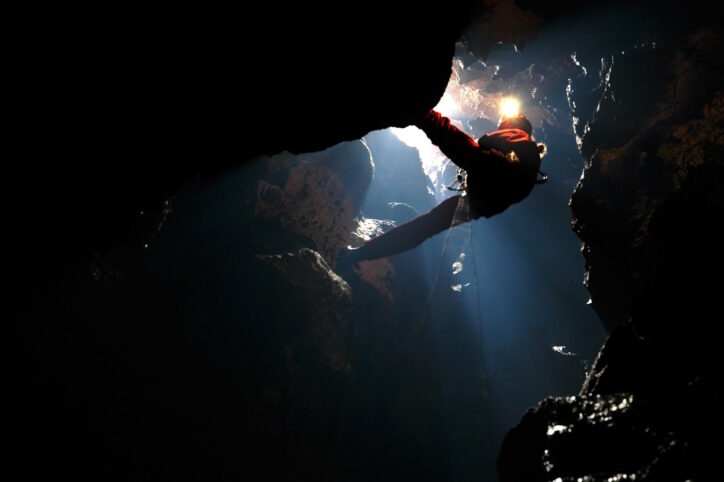
People who visit caves for the sport of enjoying the stalactites, stalagmites, and other rock and mineral formations that can be found there are known as spelunkers. Visit this Spelunking Basics site to learn more about spelunking.
Volcanoes
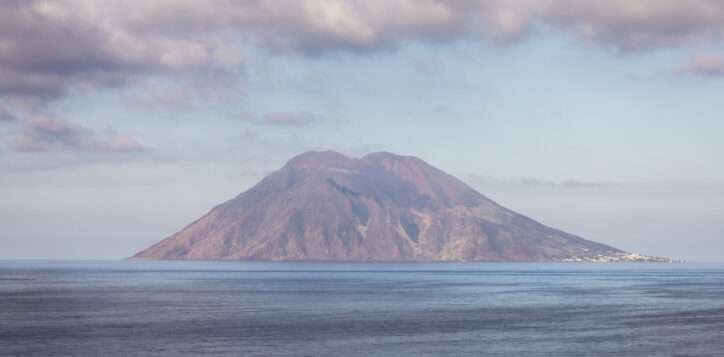
The crust of the earth is solid and is broken into giant chunks that float on the hot, liquid mantle. These chunks are called tectonic plates. Our continents rest on them. At times the mantle can actually find a crack or weak spot in the earth's crust and break out to the surface of the earth. It is here that the melted rocks, or magma, can erupt through the crust. When the magma escapes the heat and pressure that has built up under the earth's surface through a vent in the crust, it is called a volcano. When cooled, the lava forms igneous rocks. Learn more about volcanoes at Science Trek's Volcanoes site.
Earthquakes
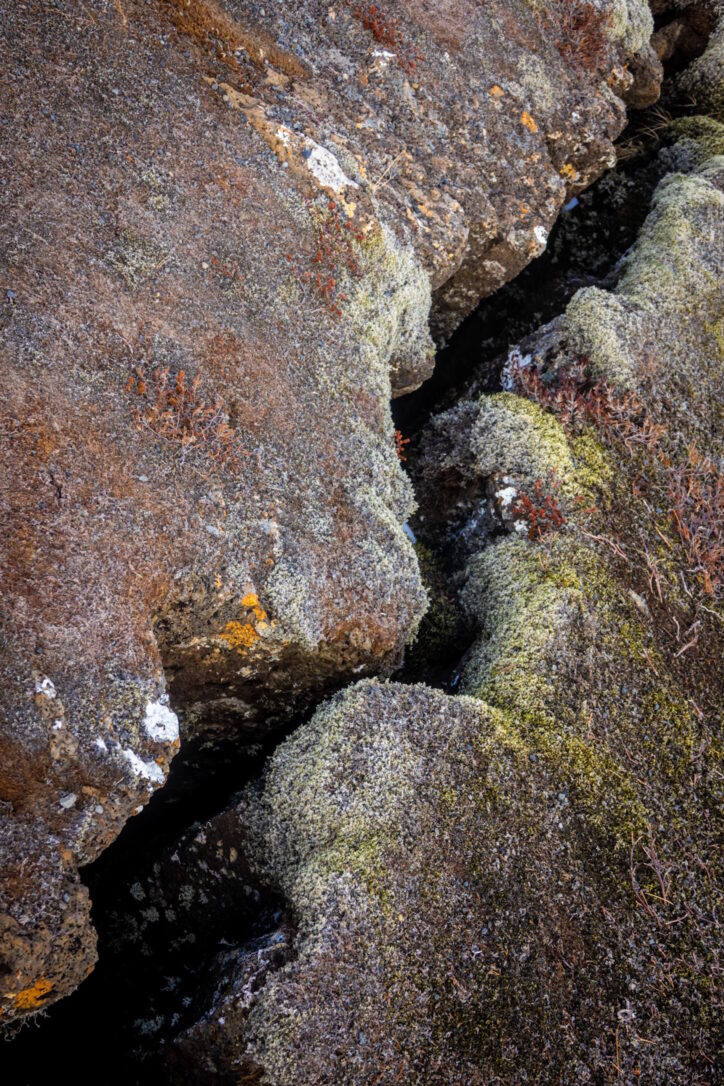
The earth's tectonic plates, floating on the mantle layer, often slide or bump against each other. When that happens, the earth beneath us shakes. A fault or crack in the earth's surface is often the primary location of many earthquakes. The point where that shaking happens takes place below the surface. This strong collision happens at a location known as the focus. Just above the focus, on the earth's surface, is the epicenter of an earthquake. The earthquake shakes the ground in waves that can be measured by scientists known as seismologists. The Richter Scale, an instrument for identifying the strength of an earthquake, works by measuring the seismic waves. Learn more about earthquakes at Science Trek's Earthquakes site.
Want to learn more about the rock cycle?

The rock cycle is complex, but you can learn a lot by revisiting the idea of it over and over. Check out these sites for more information:
- The Mineralogical Society of America has a rockin' Mineralogy4Kids site
- Learner.org has a great interactive page to study the rock cycle
Discover more as you learn how to think like a geologist and mineralogist.
Fun Links
Join RJ and Mia in Scholastic's Study Jam on Earth Structure and the Rock Cycle. Try out the karaoke song and the quiz. Then move on to other Study Jams on minerals, igneous rocks, sedimentary rocks, metamorphic rocks, weathering, and erosion.
The Smithsonian's American Museum of Natural History has a great Geology site that includes stories, activities, games, and flash cards. Check out these features: Being a Geologist, If Rocks Could Talk, What's the Big Idea About Earth?, Making Rocks, and The Amazing Mundo.
Mineralogy4Kids includes lots of information about properties and identification of rocks and minerals, crystals, and the unlikely places you will find minerals in your house.
Perhaps this little "rock" song will help you remember the differences among sedimentary, igneous, and metamorphic rocks. Sing it to the tune of "Row, Row, Row Your Boat."
Sedimentary rock has been formed in layers
Often found near water sources with fossils from 'decayers.'
Then there's igneous rock, here since Earth was born.
Molten lava cooled and hardened that's how it is formed.
These two types of rock can also be transformed
With pressure heat and chemicals met - a - morphic they become.
Top 10 Questions
January 2012
Thanks to Reed Lewis, Geologist, Idaho Geological Survey, University of Idaho; and Megan Dixon, Adjunct Instructor, College of Idaho for the answers.
-
What type of rock is the Capitol made out of?
It's made out of sandstone. In Idaho, there were great deposits of sand that formed into sandstone over a long period of time. The material that was in the water over the years helps to hold the sandstone together and adds to the beauty of the buildings. (From Luke in Mrs. Schweitzer's class at Riverside Elementary School in Boise)
-
How do people make sand so soft and in so many pieces?
Most of the sand is not made by people, but by the weathering of rock. Freezing and cooling of rock, along with water washing it down into streams and beaches, form sand. (From Madison in Mrs. Woodall's class at Dalton Elementary School in Dalton Gardens)
-
Statues are made out of rock and look like one giant rock. How do people make statues that look like a single piece of rock?
When people make statues, they look for rock that has accumulated into one large mass. Marble is often used to make statues. Marble is found in special places and in big pieces, so there are statue-sized pieces of marble. (From Renee in Mrs. Woodall's class at Dalton Elementary School in Dalton Gardens)
-
If weather can break a rock, can it break a crystal rock?
Weathering can also break crystals, but it will take longer than breaking a rock. Crystals are pure sheets of a single grain of mineral and they don't break up as easily as rock. (From Ally in Mrs. Woodall's class at Dalton Elementary School in Dalton Gardens)
-
Is Yellowstone a super volcano that's ready to explode at any minute?
Yellowstone is a caldera, a collapsed area where there is some action under the crust. Will it erupt at any minute? Probably not, but it is watched very carefully. There is a prediction that something will happen in the future. It's all dependent on the amount of pressure that builds up under the crust. (From Austin in Mrs. Hunt's class at Cynthia Mann Elementary School in Boise)
-
Does the earth grow?
Yes, but it depends on what you mean by growing. There are areas that are mostly under the ocean (but not always) where lava is coming up to the surface and pushing. You could say the earth is growing at that point because this spreads the earth's crust. When you have lava coming to the surface and cooling, you could say the earth is growing because the lava forms into crust, which increases the surface of the earth. (From Grace in Mrs. Durham's class at Hayden Meadows Elementary School in Coeur d'Alene)
-
How do mountains form?
Mountains form in different ways. Some mountains, like the Cascades, form by lava coming out of the crust and flowing out onto the surface. Mountains can also be formed from erosion. Over time, water washes over materials and forms canyons and mountains. Many mountains in Idaho were formed this way. A third way is when you have a combination of water moving and material coming out. With this way, there is a fault at the base of a peak, which drops the valley down and brings the mountain up. A fourth way is when continents collide into each other causing the crusts to get smashed together and stay on top of one another. The Himalayas were formed this way. (From Hope in Mrs. Hunt's class at Cynthia Mann Elementary School in Boise)
-
Why are minerals different colors?
The elements in minerals give the minerals their color. For example, a little bit of chrome may cause a mineral to be green. Iron may cause a mineral to have red tones. (From Taylor in Mrs. Woodall's class at Dalton Elementary School in Dalton Gardens)
-
What would happen if a man went to where the earth's crust was finished, and dig?
If you go too far down, you'd get melted along with your equipment, or crushed by the pressure of the rock. There are places where the crust is thinning and you don't have to go too far. If you go to a place where there is lava, like on the islands of Hawaii, the crust is thinning or there is a gap for the lava to escape to the top. Here, you wouldn't want to dig too far because you would reach the mantle and that heats up very well. (From Gabriel in Mrs. Durham's class at Hayden Meadows Elementary School in Coeur d'Alene)
-
What are the chances of having another earthquake?
Excellent! We don't know when, but geologists have spent a lot of time trying to predict the next earthquake. We've made progress, but fundamentally, they tend to be a surprise. Major earthquakes draw our attention, but earthquakes are happening every day. We just don't feel all of them. (From Gus in Mrs. Schweitzer's class at Riverside Elementary School in Boise)
